This year’s Boston Marathon has come and gone and that means thousands of marathoners are gearing up to qualify before the registration period opens in September. If you have not yet picked that special Boston Marathon qualifying race, here are some tips to select the one for you.
Tips for Picking a Boston Marathon Qualifying Race
Link: How Do You Qualify for the 2020 Boston Marathon?
Two Things Before We Start
First of all, the Boston Marathon qualification period for 2020 is underway – ever since September 15, 2018. That means your qualification window for Boston is about 1.5 years before that Boston Marathon you plan on running.
Second, remember that it is how old you will be on the Boston Marathon you are trying to get in that will determine which qualifying time you need. So, if you are a 44 year old male right now but will turn 45 in March of next year, you would need a 3:20 qualifying time for the 2020 Boston Marathon. It does not matter how old you are when you run the qualifying race, it just matters how old you are on the day of the Boston Marathon.
| Age Group | Men | Women |
|---|---|---|
| 18-34 | 2:55 | 3:25 |
| 35-39 | 3:00 | 3:30 |
| 40-44 | 3:05 | 3:35 |
| 45-49 | 3:15 | 3:45 |
| 50-54 | 3:20 | 3:50 |
| 55-59 | 3:30 | 4:00 |
| 60-64 | 3:50 | 4:20 |
| 65-69 | 4:05 | 4:35 |
| 70-74 | 4:20 | 4:50 |
| 75-79 | 4:35 | 5:05 |
| 80+ | 4:50 | 5:20 |
Boston Marathon Qualifying Race Tips – Race Elevation Profile
This is a pretty obvious one for most and all but the very strongest of the runners – check the elevation profiles of the marathons you are considering as Boston Marathon qualifying races. Most marathons will have the elevation profile located on their website near the course map.
If you cannot find it on the marathon website, search for it on places like MapMyRun or Garmin Connect or any of the other running workout sites. On those sites, you can find the upload of other runners who have run that particular race and it will give you a good idea of what the elevation is like.
This is an elevation profile of a hilly marathon – not an easy one to run a BQ on!

The elevation profile of the Phoenix Marathon
Be Aware of Marathon Advertising!
Also watch out for words like “fast and flat” on race websites. Just because a race claims it is fast and flat does not always mean that they will be fast. I have run marathons before that advertised that but there were several points on the course where runners merged with runners from the other distances and at paces that were slower than what we were running.
These bottlenecks could easily take minutes off of your time depending on how crowded it gets. Make sure you read reviews on that particular race to see if that is the case.
Downhill Does Not Automatically Equal Super Fast!
Finally, finding a really nice downhill course does not mean you can punch your Boston Marathon ticket once you sign-up. The St. George Marathon is well-known for the half-mile descent over the length of the course and many runners sign-up without properly training. That much downhill can kill your quads and you can find them burnt out before you reach the finish line.
Study the elevation profile and train for it – whether it is all downhill or flat.
Boston Marathon Qualifying Race Tips – Time Of Year
Link: Marathon Calendar
Fall Marathons = Summer Training
With the majority of marathons in the spring or fall, that will likely be when your marathon that you choose will be. But, just because a marathon is in the beautiful fall weather does not mean that it will be an easy road for you to Boston. Depending on where you live, a September/October marathon means that the bulk of your heavy training may take place in July and August.
Where I live, that is very hot and humid! It is hard to hit your training paces when the weather is that hot and not hydrating enough can really set you back in your training because of the fatigue to your muscles. This was the case with the Reykjavik Marathon I ran one year. It is in August, but Iceland is very beautiful and just the right temperature then.
But, my weather in training was terrible. If I had been using that as a goal race, it would have been hard to get my miles and times in during training because I do not handle the humidity that well.
Spring Marathons = Winter Training
The same can be said for spring marathons. If you are in the northern US, that means that an April marathon will have you training the cold and (most likely) snow of February and March.
Growing up and running in Western New York, I have had more than my fair share of training runs in the winter and it can be difficult! Not only is the cold difficult to deal with but slick/slippery roads can make hitting accurate paces very difficult. That means treadmill time but even that can be difficult since you want the road training as well.
Of course, unless you love the weather, it should go without saying to avoid summer marathons in the hot part of the country and avoid winter marathons in the cold parts. While it is possible to still qualify, most people will have a very hard time doing so in those conditions.
Boston Marathon Qualifying Race Tips – Crowds
Crowds can help you get to that Boston Marathon qualifying time (as long as it is not too crowded!) | Courtesy coronado / Shutterstock
I have run many events where there were no crowds to speak of – running in the race or cheering from the side. While there are many runners that like the solitude, I have always found my pace to kick up when I am in crowds or running by cheering crowds. So, I use that to help me with my selection – looking at races that have a healthy number of runners starting and enough areas of coverage in places of population that crowds should be out.
Running with more people is helpful for me in two ways:
- it helps me to have company and talking with others helps me to not notice as much when the pain sets in as well as making me keep up with those that are still going strong
- it helps me when I am able to pass other people as it gives me a nice confidence boost later on in the race.
Bonus – Pace Teams
Bonus Tip! – check to see if your chosen race offers pace teams. With GPS watches, we really do not need them as much for the timing part of things but they can be very useful for helping you get to your time goal! Some marathons may not offer pace teams for all Boston Marathon qualifying times, so check on the site to see.
If they don’t have a pace team for the marathon time you need, check to see if they have a half marathon pace team that is at the pace you need. If you share the course, this could get you almost half of the way through with a group.
Boston Marathon Qualifying Race Tips – Course Style
If I am running a marathon for the scenery and the experience, I want it to be as interesting and culture-filled as possible. I want to go by all the historic landmarks, I want to experience some of the fantastic views of the city – I want all of it! But, if I am running a goal race where my goal is to run a fast time or qualify for the Boston Marathon, I look at the course more for other things.
Loop Course Can Help
One of the things I like to see is a loop course. Nothing crazy like a 3 mile loop, but something that has like a double loop or so. There are a few reasons that is good for me and others:
- it helps because you have the first loop to learn the course
- it helps crowds to be able to congregate in greater numbers since they will see everyone more often
- it helps the race organizers to have better aid stations since there can be fewer stations overall
- if the loop is small enough, it can help to pass people in the last loop to give that boost near the finish.
Boston Marathon Qualifying Race Tips – Location
This is the fun one – for those of us who use miles and points, it doesn’t really matter where the race is! Rather than being tied down to selecting a Boston Marathon qualifying race in your home town or the next town over, you can expand and look at the whole country and even the world for the best possible race for you!
Rather than looking at Hometown Marathon, you can look at some of the fast courses like the Berlin Marathon! Not only do you get to run in a cool, foreign marathon, but you could also have a shot at running a Boston Marathon qualifying time in the same marathon that claims some of the fastest times in the world!
How about the popular St. George Marathon? It can be expensive to get to if you are paying, but it only cost me about $10 for that trip when taking into account the airfare and the hotel! That is insane, but it is possible because of miles and points. The race I have picked out is in a part of Europe that I have not visited yet and which has some pretty pricey tickets, even from other spots in Europe. But, thanks to miles and points, that cost drops like a rock to just being taxes and fees.
Featured image courtesy Marcio Jose Bastos Silva via Shutterstock
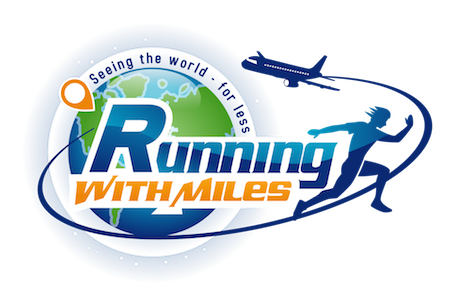
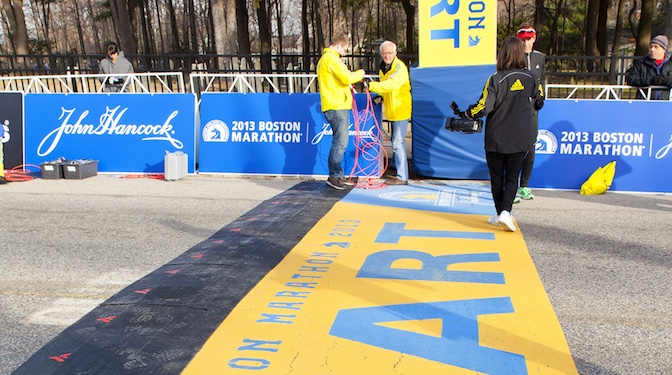



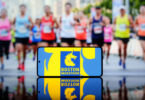
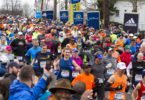

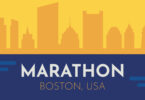
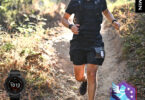

Those are all great factors to consider. I disagree with your conclusion about one of them though: I hate loop courses with the burning fire of a thousand suns. :). Nothing more discouraging to me in a race than running half the distance and reaching the finish line and realizing YOU HAVE TO DO THAT SAME THING AGAIN.
I should have been more clear that the loop is something that I find attractive! I completely understand it doesn’t work for everyone. Hey, I even ran a .5 mile loop for a 12 hour race one time! That is 130 loops :). At least I got to talk with a lot of people but I did have some minor knee pain on the leg that was the inside leg for the loop since there was a lot of gradual turning.
Berlin is a great experience, with 45,000 fun friends to run with and in a great city to experience. But… I tried for a PR there and was stifled by the 45,000 runners all in one big crowd at the start. It was so hard to shuffle at least the first mile or two to let the masses spread out, even on the 3 -6 lane starting road. Also stone surfaces need to be prepared for a they are brutal on the feet. I got a BQ there but a PR was not possible with so many runners on narrow city streets that blocked the clear path.